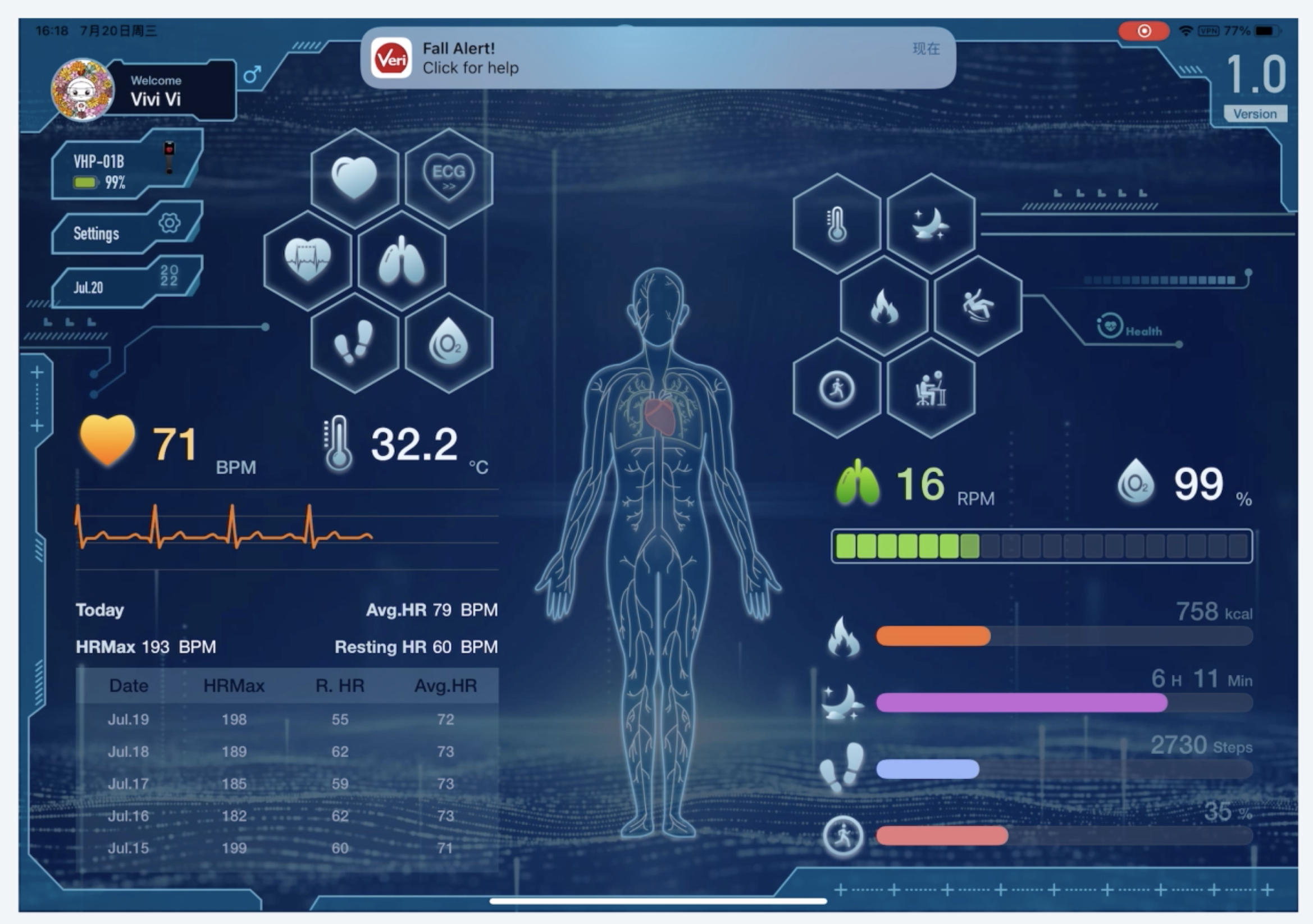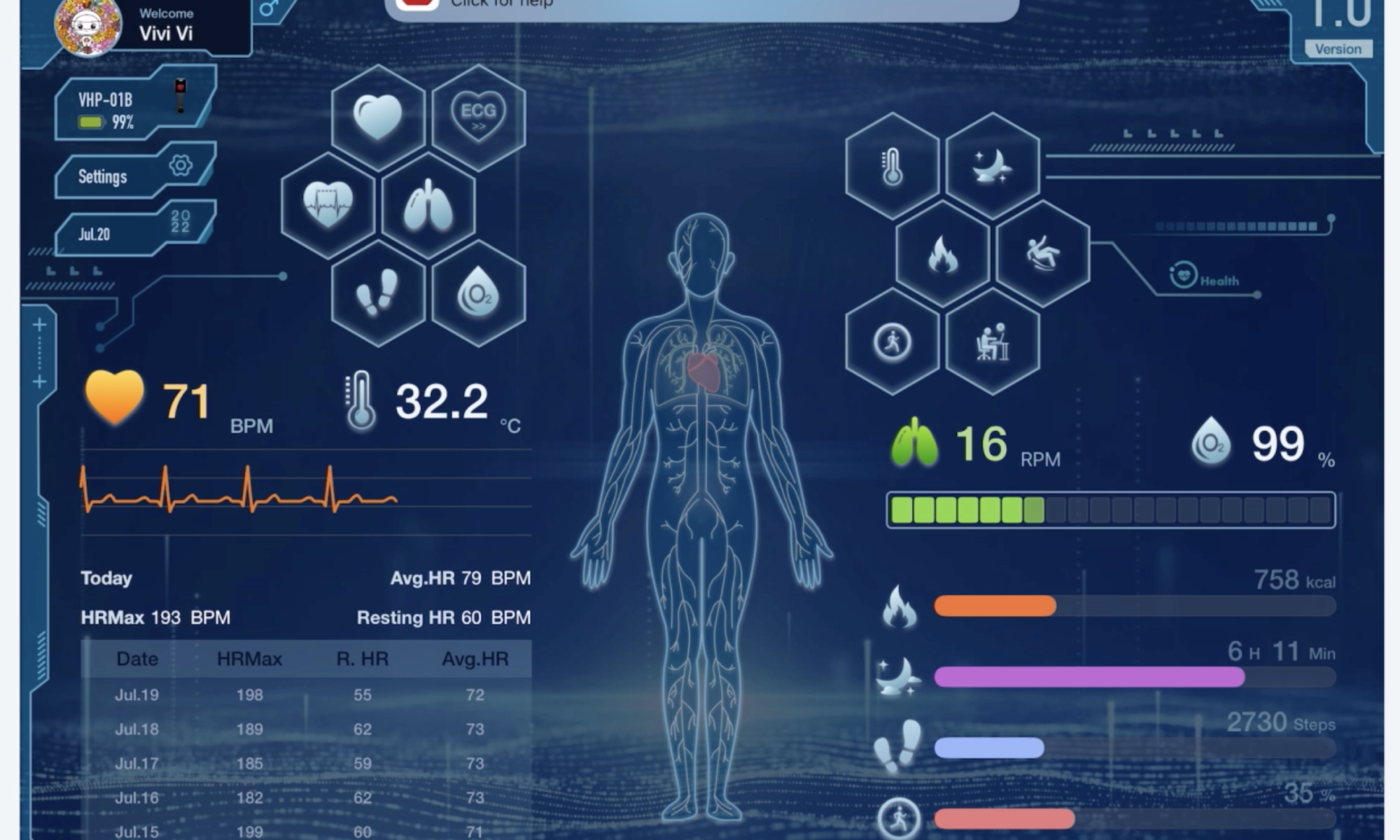The wearables electronics market is a large and fast growing one. According to Precedence Research, the global wearable technology market is expected to grow at a compound annual growth rate of 13.89% during the forecast period 2022 to 2030. Precedence estimated the global wearable technology market size at USD 121.7 billion in 2021 and expects the market to surpass USD 392.4 billion by 2030. By the segments served, this huge market breaks down into Defense, Healthcare, Entertainment, Fitness and Wellness, Enterprise and Industrial applications.
While entertainment-oriented and fitness-oriented wearables may be the conspicuous ones among the healthcare related wearables have grown to be a significant segment over the last few years. Within this segment, the applications fall into health and fitness, remote patient monitoring and home healthcare. Most commonly known for measuring heart rate, blood pressure, temperature, and oxygenation level, the list of potential healthcare applications is endless. By various estimates, the Healthcare segment is around 10% of the total market and expected to stay so for the foreseeable future.
With such a large market opportunity, a number of players are interested in tapping into the healthcare wearables market segment. At the same time, there are a number of challenges too to becoming a successful player. On the one hand is the complexity of physical design and manufacture of the wearable to make the device work reliably across the entire population. On the other is the complexity of electronics hardware and software design and development.
As a “Silicon Platform as a Service (SiPaaS)” company, VeriSilicon recently announced its VeriHealth Chip Design Platform to address the electronics hardware and software aspects of developing healthcare wearables.
Market Entry Challenges
With wearables taking the form of bodywear, neckwear, headwear, wristwear, footwear and eyewear, the design and development of these products could be very challenging. The products have to work reliably across the entire cross-section of the population. On top of this, the products have to be light weight, have a long battery life between recharges and deliver enough compute performance too.
VeriSilicon Accelerates Wearables Development
The VeriHealth reference platform supports many different ISA including RISC-V, Arm Cortex-M and VeriSilicon’s own ZSP and provides a unified hardware abstraction layer (HAL) interface for various hardware platforms. The platform also provides a scalable software toolset that includes firmware SDK, mobile SDK and mobile reference applications to enable a multi-level software framework design involving the driver, hardware abstraction layer, middleware and application layers.
The mobile SDK supports both iOS and Android, and provides unified interface and protocol, which can be customized based on the SDK. VeriHealth also offers capabilities including full-link OTA and end-to-end data encryption.
Flexible Configurations
VeriHealth can fully support various application scenarios, such as nursing service for elders and kids, exercise monitoring, virus prevention, etc. The platform is equipped with more than ten VeriSilicon developed health and exercise physiology algorithm modules for quick development of customers’ wearable devices.
VeriSilicon’s proprietary health model supports a full set of functions, such as fall detection, atrial fibrillation monitoring, heart rate variability (HRV) detection, blood pressure estimation, EEG detection, EMG detection, sleep quality tracking, sedentary reminder, physical activity monitoring and calorie calculation, as well as health anomalies’ prediction. After processing the data acquired from peripheral PPG, ECG, EEG, EMG, IMU and TMP sensors, VeriHealth provides accurate real-time health information, including heart rate, respiration and blood oxygen saturation.
Taking user fall detection application as an example, when the wearable detects a fall, a notification would be sent to the App over a Bluetooth connection. If the user does not press the stop button within a preset time limit, the App will notify the preset emergency contact by phone call and text.

Low Power with Performance Optimized for an Application
VeriHealth based SoC solution enables long battery life through VeriSilicon’s high-performance, low-power ZSP IP and ultra-low power BLE IP. The resulting wearable device can be powered by a 200mAh rechargeable battery and work continuously for 30 days between recharges.
VeriSilicon’s ZSP architecture offers an optimal combination of MCU+DSP capabilities. The ZSP’s efficient digital signal processing ability enhances algorithm execution at the same time reduces power consumption.
Driving Research, Cultivating Talent, Expanding the Ecosystem
With the healthcare wearables market projected to grow to about USD 40 billion by 2030, there are plenty of technological advances to be expected in this space. VeriSilicon is committed to research and development and has established a Smart Medical Treatment and Healthcare Innovation Laboratory to cooperate with a major university in China. Such initiatives should help nurture chip industry related talent and expand the smart healthcare ecosystem.
Summary
To date, VeriSilicon has developed two types of smart devices – a wristband wearable and a patch wearable, as well as Apps for the iPhone, iPad and Android phone. VeriSilicon through its VeriHealth chip design platform has helped customers design industry-leading chips for health monitoring, gene sequencing, and capsule endoscopy.
For more details, please contact VeriSilicon.
Also Read:
VeriSilicon’s AI-ISP Breaks the Limits of Traditional Computer Vision Technologies
Share this post via:





Comments
There are no comments yet.
You must register or log in to view/post comments.